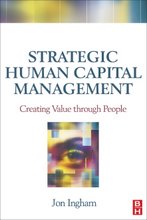
I had planned to start with some of the easier words such as equality, wisdom and justice, but there were a couple of things come up at HRevolution which made me think about love, so I’ve decided to start here.
So, for one thing, there was the general lovey-doveyness of the thing whole (nothing wrong with that) as in Trish’s tweet here. But the real driver for this post was Paul Hebert’s session on incentives and recognition, as well as a general frustration in this and other sessions with a**holes.
Paul talked about the common problem in organisations where managers want to hold their best people back and suggested we need something more like love from our managers – a bit more like the way parents feel about our children – wanting the best for them rather than ensuring they don’t get paid more than the manager etc.
Somebody (I lost track of who, sorry) suggested a boss had explained to them that he did his job in the same way that he looked after his kids: ‘I love them and look after them’. This took us into a not particularly valuable loop about parenting as an analogy for management – and a chance for Laurie Ruettimann to present her proposal for a loveless model where work is just a contract.
But I still think the original point was spot on. I think we do need love in our organisations. (And there are lots of other ways of loving people than in parenting of course - Trish’s love for her attendees is probably a more apt example.) I do think we need more love in our organisations to make them into more compelling places to be.
I didn’t always think so – and remember challenging someone else about this on some site somewhere once. But the more I’ve thought about it, and worked with organisations to bring about deep change, the more convinced I’ve become that we can’t ignore those things we think are important, even if they makes people cringe at first.
So how do we bring more love into our organisations? Well, I don’t think moving towards more love needs to be that hard. Paul’s group came up with the ides of a crappy manager policy, which whilst not stimulating real love would remove a lot of the present distaste.
But policies (even those emphasising what you do want rather than what you don’t) act a little like employee recognition as per Paul’s presentation (he suggested that recognition can generate slight changes in behaviour, like altering the course of a ball rolling downhill by a couple of degrees, but you need incentives to get bigger change / start the ball rolling in a different direction). I think you need something bigger to get real love.
To an extent, I think the something bigger needs to be a culture which emphasises the importance of personal relationships for their own sake, rather than as things which need to be manipulated to do a job. And I think creating this culture is partly about freeing people up to have more time for these relationships, as well as educating people about social intelligence (building on the points Kevin Grossman made about emotional intelligence) to help them appreciate the importance of these relationships – to them as well as the other people, and the organisation they’re working within.
Yet there’s got to be more to it than this as well. The key enabler I think must be more of a sense of pitching in together. Would Trish have felt the same sense of love for her attendees if she’d been organising a standard SHRM conference? Actually, Trish probably would!, but I think the general sense of love-in would have been much reduced.
So the traditional family may have been the wrong metaphor for organisations, but perhaps the model of a commune could work (for at least some aspects of organisational life)?
So there you go. I’m not sure I’ve got to the answer on this, and I knew it wouldn’t be an easy post to write. But I do agree with Gary Hamel that love is something we should be thinking about – and working towards.
What about you? Do you want to see more love in your organisation, and how would you go about creating it?
- Consulting - Research - Speaking - Training - Writing
- Strategy - Talent - Engagement - Change and OD
- Contact me to create more value for your business
- jon [dot] ingham [at] strategic [dash] hcm [dot] com
.



































